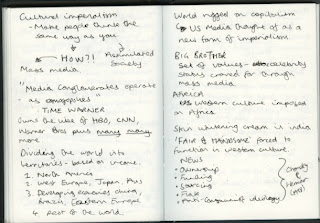The Birth of Venus, Alexandre Cabarel (1863)
Eva Herzigova Wonderbra Ad (1994)
---
‘according to usage and conventions which are at last being questioned but have by no means been overcome - men act and women appear. Men look at women. Women watch themselves being looked at’ (Berger 1972, 45, 47)
Throughout history, men have been the dominant gender in society, with women seen as a means of satisfying men. For example, the vast majority of nudes in historical art were women, aimed to be admired by men.
Today, the scenario is more or less the same, but with a much different approach. Whereas historical women were submissive and ever obedient, modern women have developed an authority over men that wasn't present before the mid-20th Century.
The first image, The Birth of Venus by Alexandre Cabarel, is a prime example of a woman appearing. Her pose signifies submission, allowing herself to be looked upon with no confrontation. The cherubs surrounding her back up the innocent fantasy of the piece and creates an idealistic portrayal of the perfect women for the ever dominant male presence of the 19th Century.
In contemporary culture, there is more emphasis on the woman watching themselves being looked at. With the progression of female rights, more opportunities are opening for women and with that, a social equality is being formed. Modern women are very rarely submissive, like they were in the 19th Century, and have the ability to strike fear into men. They have become more challenging, they have a stronger presence.
The Wonderbra Ad from 1994 displays Eva Herzigova in very limited clothing, paired with a suggestive strapline. She is allowing herself to be gazed upon, but also has a stance that evokes power and potential confrontation. She is stood firmly, showing emotion at her own beauty. It gives men permission to look, but lets them understand that it is her choice; any risk of detection and the man would feel challenged, under her authority.
The shift in power over the gaze is what separates the two images and eras. Similarities show in the male gaze on the female body, but the modern woman has the potential to have authority over men - using the gaze. The fact that men are now being objectified in modern advertising demonstrates the social equality that has been reached, and with that a shift of power with the gaze.


















